#operation hardtack
Text
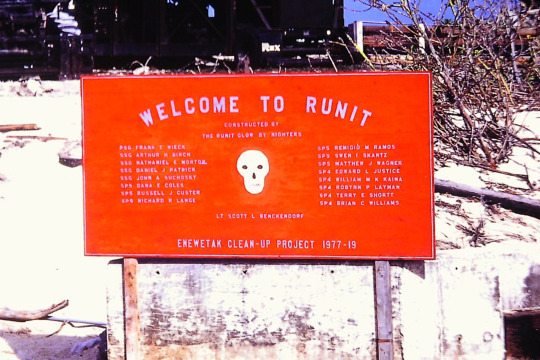
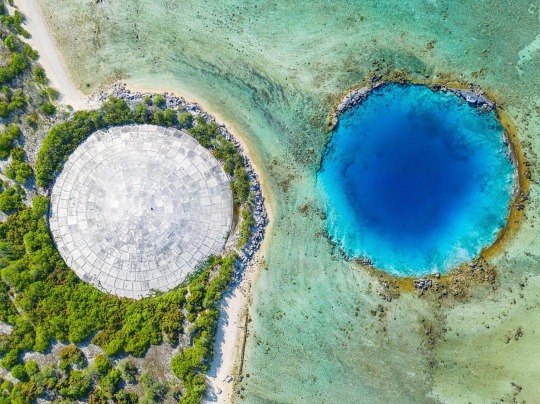
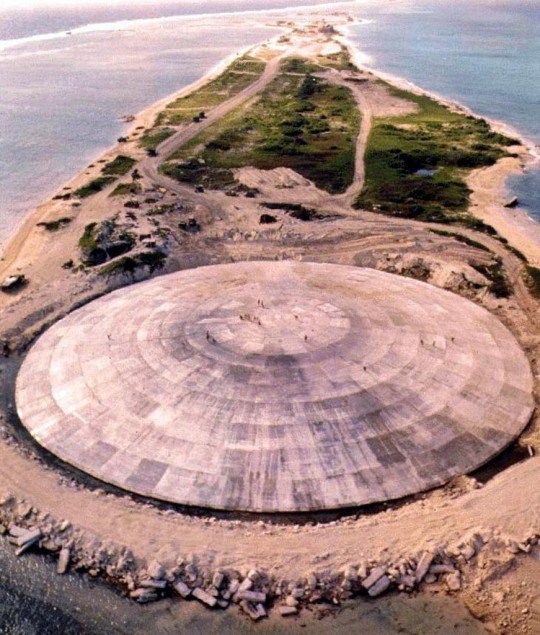


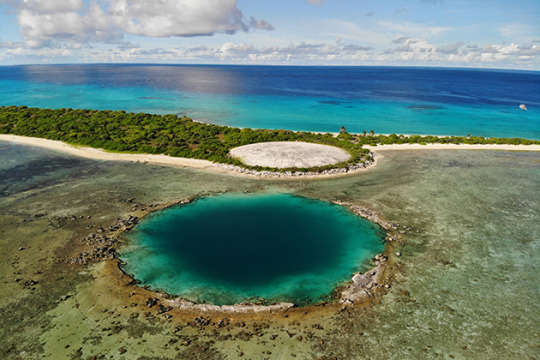

#ruinit dome#marshall islands#enewetak atoll#nuclear#nuclear test#cactus dome#hardtack 1#cactus shot#may 6th 1958#operation hardtack
4 notes
·
View notes
Text
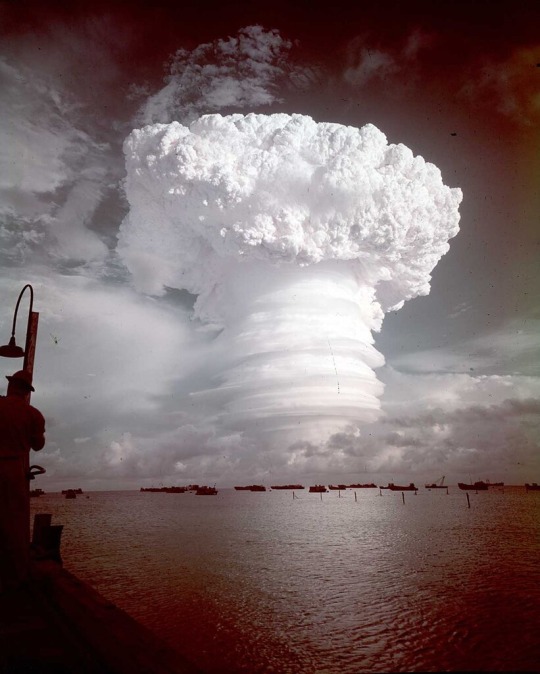
The nuclear explosion of Operation Hardtack Oak, June 1958 / Los Alamos National Labs
35 nuclear detonations over several months in 1958, code name Hardtack.
8 notes
·
View notes
Text
Dungeon Logistics
Between the currently-airing Dungeon Meshi anime and my recent binge of the manga (I finally got past the 40% mark), I've been thinking about the logistics of long-term dungeoneering.
The Problem
Military theorists and historians have some rules of thumb about what soldiers can be expected to do and need. [citation] For instance, they usually need around three pounds of food per day and can carry around 90-120 pounds of stuff. (The total varies less by strength and more by how much of that strength you can convince soldiers to use carrying stuff the general cares about.)
Theoretically, this means soldiers can carry a month or two of food; however, hardtack makes a pretty terrible weapon. Most of their carrying capacity is taken up by inedible (and also important) gear; the standard rule of thumb seems to be that soldiers can carry about ten days' worth of food.
The same is presumably more or less true for dungeoneers. A wizard's robe, staff, and spellbook probably weigh less than a sword and a suit of armor, but that space is going to get taken up by the miscellaneous tools you need to survive in a dungeon that aren't necessary for armies walking through inhabited lands.
In short, in the absence of Senshi, dungeoneers can only spend about a week and a half in the dungeon. Obviously, you need to set aside time to return to the surface, so you can't go deeper than five days. Well, you can—starvation doesn't kill you instantly—but you really shouldn't.
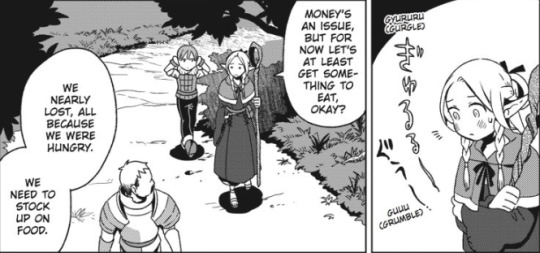
Extra Cargo
What if we added some people who only carried food? That would help some. Including two porters per three dungeoneers would roughly double the group's operational endurance, from ten days to twenty.
But the number of porters grows rapidly as the desired trip into the dungeon grows longer; operational endurance to 30 days requires four porters per dungeoneer. Even if the dungeon is spacious for a party of dozens to be possible, having that party be 80% or more noncombatants is a recipe for disaster.
What about pack animals? Mules require about five times as much food as humans (assuming they can't graze in the dungeon), but they can carry close to 300 pounds of supplies. One mule per three dungeoneers extends operational endurance from 10 to 15 days, a second to 17.
That's not bad, but pack animals work better when they can graze. If the dungeon has grass or equivalent foliage, one mule per three dungeoneers increases operational endurance to about 26 days, a second to 35, and one mule per dungeoneer increases it to 39. But most dungeons don't have much to graze on.
For the spendthrift dungeoneer, pack animals have one advantage over porters: You can eat them.
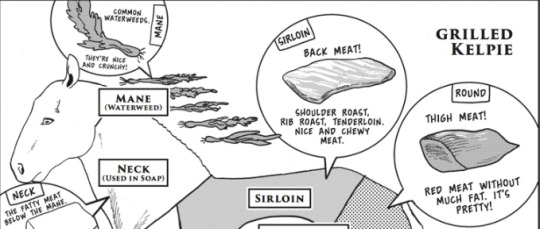
Butchery
I can't find any actual data about how much meat you get from butchering a mule, but combining other data lets me estimate 300 pounds (with large error bars).
So you could theoretically buy a (relatively) cheap mule at the surface, bring it with you through the dungeon, butcher it when you'd eaten through the supplies on its back, and live off its meat for a while. In this case, you probably don't even need to feed it on the way down! I have been informed that you do, in fact, need to feed it.
Five dungeoneers could live off the supplies carried by an increasingly malnourished mule for about 19 9.5 days. The mule would probably lose weight during that time, but the butcher could probably get at least a hundred pounds of decent meat off the poor critter. That would give them at least a week of extra rations, plus whatever they carried on their own backs, for a total operational endurance of at least five three and a half weeks.
This strategy probably works best if the adventurers are planning to go establish a camp after a few days and linger there for a few weeks. That would let them slaughter the mule as soon as they reach their base camp and free them from somehow carrying a whole mule carcass worth of food around afterwards.
This kind of strategy could enable supply depots relatively close to the surface. If we increase the party from five dungeoneers and a mule to five merchants and twenty mules, they could supply adventurers going a bit deeper. They'd need to charge a pretty hefty surcharge—at the very least, they'd need to cover the cost of killing so many mules!
It's also possible to create supply depots without slaughtering pack animals, but they would need to be smaller, closer to the surface, or both.
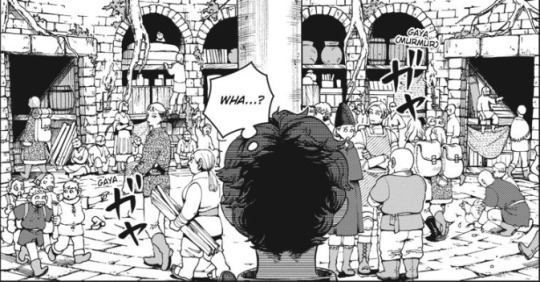
It would, strictly speaking, be possible to make a deeper supply depot, supplied by a larger depot. It would probably be impractical, though.
Conclusion
Dungeoneers weighed down by their own equipment can only spend brief periods of time exploring a dungeon. If they include some porters or pack animals in the party, they can increase that to maybe a month (two weeks down, two weeks up).
A sufficiently profitable dungeon economy might enable a set of outposts where adventurers can rest and resupply between treks deeper into the dungeon. If enough pack animals were slaughtered, they might be able to bring supplies a week or two deeper than the surface market.
In the right circumstances, dungeoneers might be able to delve a full month below the sunlit world without eating anything except wheat bread and mule meat. But this requires a small army of merchants and herdsmen and porters and butchers and so on, feeding not just the dungeoneers themselves but all the people supporting them, and all the people supporting those people, reaching through countless miles of cavern and across acres of farmland.
And of course, all of that assumes that no step in this process gets disrupted by the dangers of a dungeon; no wargs killing your mule, no warg packs overrunning the outpost, no getting lost in the twisty little maze of passages all alike. The higher you build that house of cards, the farther you'll far if it fails.
Senshi had the right idea.
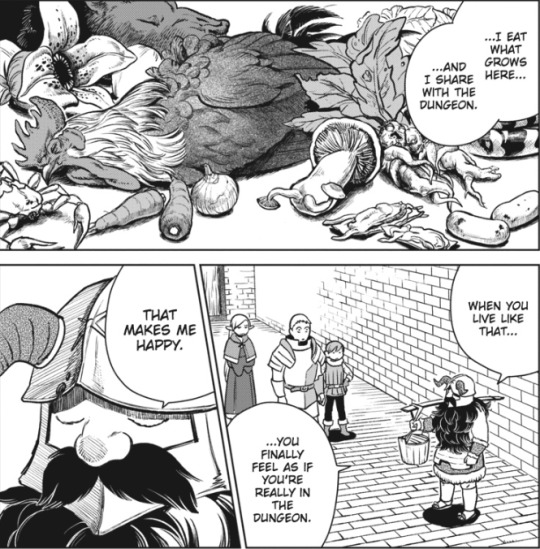
#fantasy#logistics#worldbuilding#dungeoneering#dungeon meshi#(inspired by)#random thoughts#food#dungeon logistics
59 notes
·
View notes
Text
listening to bret devereaux on a naval history podcast talking about the completely different economies of age of sail and age of oar naval warfare is fascinating (link)
so far he's mentioned that the biggest difference (not surprising in retrospect) is range--an age of sail ship can operate independently at sea for much, much longer than a galley. this means you can do shit like blockades, cutting your opponent off from the sea for long periods of time (as britain tended to do to france), which just isn't possible for oar-powered ships that can't hang out outside ports intercepting every big, slow ship that comes along. galleys were incredibly crowded since they needed huge numbers of oarsmen for propulsion, and quickly became fetid if at sea for long periods. galley fleets are basically for 1) transporting armies, 2) supplementing a siege (the fleet will be based with the besieging forces), and 3) preventing the first two things being done against you.
but also the economies of shipbuilding are completely different--while triremes for instance are not cheap exactly, but ongoing crew costs were much higher than construction costs. starting in the age of sail, ships are these phenomenally expensive and complicated things compared to their predecessors, with a much greater part of their lifetime costs coming up front. fielding a competitive navy is much harder, and losing a fleet is a catastrophe for your military budget.
but with that comes a tool of really robust power projection--controlling the sea means controlling the commerce, which means if you're britain it doesn't matter if you can't field the best army, you can be a dominant world power because you can choke off the economy of anybody you are at war with. (naval supply is actually pretty easy in the age of sail specifically bc all you need is water, hardtack, and rum, and you can buy that at basically any neutral port--i assume once you have to feed ships with massive amounts of coal it becomes a bit trickier!)
alfred mahan, not being stupid, noticed this and was part of a big push to get the US to invest in a great-power navy in the late 1800s/early 1900s--and he was right! u.s. military hegemony has a lot to do with the fact that the u.s. has the most powerful navy in history.
82 notes
·
View notes
Text
Dragon Age Fanfic Fun, Part 1: Cook Shops
Edit: I realized, oddly enough, that I wrote this with Haven and Skyhold in mind (in short, DAI - probably because that's what I've been replaying as of late, lmao.) I promise I will get around to including how cook shops would operate in places like Kirkwall or Denerim (basically, urban centers)!
This will be part one of a series that was inspired by this video by the Modern Knight, in which I come up with silly little immersive ideas that one can easily add to their Dragon Age fanfic (or perhaps any medieval-themed fic/story) with the Dragon Age/Thedas setting in mind.
I hope to maybe do a series on this, at the very least for my benefit to reference instead of getting lost and forgotten about in a notebook, lmao. So let's begin, below the cut!
Also mild disclaimer, this is not an end-all-be-all where "OMG WHAT IF THIS ISN'T REALISTIC ENOUGH??" or "ACKTUALLY, MEDIEVAL FOOD SELLERS WOULDn't..." - look, at the end of the day this is just fanfic fodder for you and your blorbos, not a history lesson. I'm bound to make an error in judgment or descriptions, don't come at me with pitchforks. 😔
So you're hanging out in Haven or Skyhold. You're building up the Inquisition from the ground up with allies and defense forces - but also the little people to sell their wares (like our favorite Orlesian merchant, Miss Belle), but what about... Food!? Who's feeding everyone!?
Cook shops!
Or, "medieval fast food." These cook shops would be strategically placed where there would be frequent passers-by, such as next to a market square, or a busy gate entrance, and cooked to eat on the go (rather than cook-to-order.) In short, you see a tasty-ass pie, you buy it, and eat it right then and there.
I can also imagine the types of clientele our varied cook shops might have; you have a wide range of people (and pockets), varying from Templars with their income, refugees who may only be able to afford suspicious cuts of meat, or members of the Chantry with specific food preferences.
What sort of food would a cook shop sell?
This is not an exhaustive list of foods a cook shop would sell in Thedas, but perhaps ideas/suggestions you can quickly use. Otherwise, I'd recommend checking out @exhausted-archivist (formally known as @old-archivist) who will easily have a vast list of Thedosian cookery that will tickle your fancy in their Foods of Thedas Masterpost (it will even specify the region in which certain meals come from!)
Also since Haven and Skyhold are Ferelden-based, keep in mind what types of foods/ingredients will be procured/used in the food being sold. There are of course exceptions, such as Belle who was recruited from Orlais, for example (so there is always the possibility of foods outside of Ferelden cuisine.)
Also, cook shops can serve a specific type of food (rather than being a mobile Walmart of sorts.) Personally, I'd be a fan of Pickled Food Merchant... mmm. Pickles.
Boiled roots
Meat/Fish/Vegetable pies
Porridge
Roasts
Sandwiches
Sausages
Fish wraps
Soups/Stews
Nuts
Dried/Cured fruits or meats
Pickled foods
Hardtack
Rations
Edible plants
Desserts
Cheaper cuts of meat
Fried/Buttered foods
There are also ideas from other historical/modern use of foods:
Perpetual stew
Pagpag (though I see this used in more urban areas, such as Kirkwall's Lowtown)
But what about breads and drinks!?
Typically you would go to a baker for breads, or the tavern for drinks. In short, if you wanted to conjure up a meal, you'd have to likely go to different locales/merchants to pick and choose your foods. I feel like maybe bread could be an exception, since I can't imagine a baker really setting up shop in Haven/Skyhold because, well, baking, but this is all fantasy so you know what, fuck it, add your traveling baker!
Alcoholic drinks, of course, would be reserved for taverns. When it comes to non-alcoholic beverages, I'd still suggest sticking with taverns because they have the facilities for storage (casks, wells, tubs, etc.) But, again, have your own traveling wine seller, you do you boo.
Honestly, I like to imagine Haven or Skyhold being way bigger than portrayed in the game, so perhaps there would be room for a complete bakery (I mean, we've got Herald's Rest in Skyhold, so why not?)
Just, uhhhh, I feel bad for those merchants at Haven. Because, you know. Reasons.
What would a cook shop look like?
Since I imagine a cook shop for organizational establishments like the Inquisition, you won't exactly have people selling food right out of their homes (as was done in medieval times), since Haven or Skyhold aren't exactly "towns."
Instead, temporary stalls, huts, or cabins could be used to open and close up (in short, you won't be finding any glass windows or bars to protect products. Rather, there would be a shutter or board of sorts, that goes over the gap where you see the person cooking, which would be lowered during the day (like a table to display food) and then shut up and bolted when closed. The "ovens, and cooking facilities" are placed at the front so you can see the chef cooking, just like at Subway when you watch people make your little dinky sandwich.
Another alternative, you could simply have someone wandering about with a tray of foods they want to sell and yelling at the people of Haven/Skyhold to eat it (think popcorn, and hot dog sellers at baseball games. :)
When vendors sell their food, they may also yell at passersby to eat their products at certain times of the day
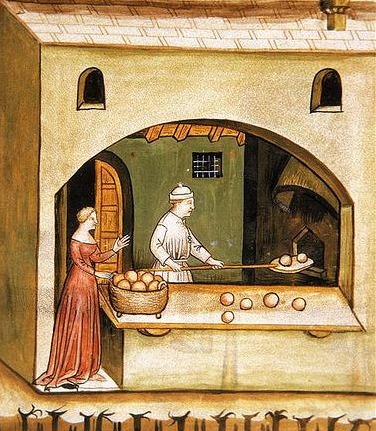
Services
Now this is gonna be fun. You can also have a cook shop that will literally make the food for you if you provide the ingredients (obviously if the merchant has the capability/equipment to do so.) In this case, according to the Modern Knight, ingredients would likely be made into pies or stews (be wary though, as merchants might steal some of the ingredients for themselves. 👀)
Also, how does Haven/Skyhold manage to look so nice when there's waste to be had? There were cesspits or barrels used to take away waste off-site. Also, be wary of hygiene practices; especially when it comes to using spices to cover the taste/look of spoiled food!
Sus Cook Shops
I'll just leave this here, for signs that a cook shop is rather questionable:
Flies
Reheated meats/foods
Foul garnishes
Faking the contents of food (such as using beef and promoting it as venison)
Well, there you have it. A basic gist of cook shops and fast food that you can implement into your DA fic (and maybe even conjure up some OCs!) Feel free to include in the comments/reblogs any other ideas you might have! Thanks for reading!
10 notes
·
View notes
Text
Operation Hardtack I - "Nutmeg". May 21, 1958. Source: The EG&G Scientific Film Collection, Lawrence Livermore National Laboratories. CC BY-NC-SA 4.0
2 notes
·
View notes
Text

Fun fact most nukes happen in October
This statistic is likely skewed by operations Hardtack II and Fishbowl both having November deadlines
9 notes
·
View notes
Photo

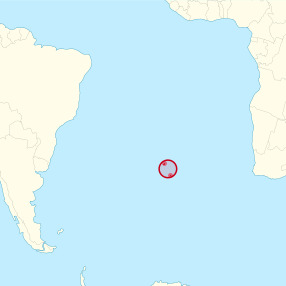

Some local foods on the world’s most remote inhabited island, and the English terms used for them
English is spoken across the globe and has many local varieties, each with their own peculiarities that correspond to local history, culture and geography. Of particular interest for me are food terms, since they can reveal a lot about all three of those by telling you about what local foods are special enough to have their own terms diverging from other varieties. An interesting case is the English spoken on Tristan da Cunha, which has the most isolated English-speaking community in the world.
Tristan da Cunha or simply Tristan is a group of supremely remotely located volcanic islands in the South Atlantic. According to Wikipedia, they are “lying approximately 1,732 miles (2,787 km) off the coast of Cape Town in South Africa, 1,514 miles (2,437 km) from Saint Helena (the island Napoleon was banished to) and 2,487 miles (4,002 km) off the coast of the Falkland Islands“.
Only one is inhabited, also called Tristan da Cunha, the most remote inhabited island in the world. The islands were discovered, uninhabited, in 1506 by Tristão da Cunha, a Portuguese explorer, but only settled in December 1810, by Jonathan Lambert from Salem in Massachusetts, USA alongside two other people. A fourth person later joined. One of the three first settlers was the only one to survive. The British later annexed it to prevent it being used as a base from which prisonbreak operations to free Napoleon could be conducted, but later abandoned it.
Eventually, the population grew slowly after a garrison of British Marines was stationed and as whalers turned the island into a base, but generally the islands remained extremely isolated and suffered many hardships. Nonetheless, it remains a tight-knit community where everyone goes by nicknames rather than legal names, a tradition mostly shared with the inhabitants of St. Helena that Tristan da Cunha administratively belongs to.
The small population (241 in May 2022, 19 of which live or work overseas), late settlement and the fact that everyone lives in the same village (Edinburgh of the Seven Seas or simply “the village” or “the settlement”) mean that the language is very uniform (no regional, social or other varieties exist), and mostly similar to British English, however there are some interesting differences in meanings of common words.
sthelena.se provides some helpful lists, e.g. on food items, that I haven’t been able to factcheck independently (owing to my inability to conduct fieldwork on the island or access to any relevant literature), but is also linked to on the blog of the Russian-American linguist Asya Pereltsvaig (an Aramaic first name and a Yiddish family name, in case you are wondering) who taught for over a decade at Stanford, so it seems credible enough.
Some of the highlights from the food list of words:
Big Heaps: A lunch party.
Black cake: A fruit cake.
Bread: In the early 20th century this referred to ships’s biscuits or hardtack, a common military and navy provision biscuit so dry and hard it was considered almost dense enough to stop a musket ball, and hence inedible until it was softened up in a liquid
Cabbage brady: A cabbage dish with fried meat.
Cake: Normal breads and rolls were called cake.
Fanni’es tea: A drink made of boiled water and milk, also called “fancy tea” after an old lady whose name was Fanny
Fleshie’s tea: A herbal tea made from Dysphania tomentosa, a wild herb growing on the island
German’s nuts: A potato pudding in the form of baked round cakes, named after a man called “German”, similar to how German chocolate cake got its name.
German’s rice: Porridge made from boiled grated potatoes. Presumably named after the same man or someone related to him.
Old Tom: A sour cider made of the apples grown at Sandy Point.
Read more:
Tristan da Cunha English Dec 8, 2010 by Asya Pereltsvaig
Schreier, Daniel; Peter Trudgill, Edgar W. Schneider, and Jeffrey P. Williams, The lesser-known varieties of English, Cambridge University Press 2010
Image sources:
Map of Tristan da Cunha and neighboring islands: Varp, Public Domain, via Wikimedia Commons
Location map: Tentotwo, CC BY-SA 3.0, via Wikimedia Commons
Photo of Edinburgh of the Seven Seas: Brian Gratwicke from DC, USA, CC BY 2.0, via Wikimedia Commons
#linguistics#english#food#tristan da cunha#south atlantic#history#bread#herbal tea#porridge#potatoes#writing
5 notes
·
View notes
Text
CHAPTER 3: [OPERATION START]
It's been an extremely trying fortnight. If it wasn't the fact you got locked out of your room, or the fact that you've been living off hardtack and chiko rolls, it's the fact that you got jumped by a grolive platoon outside Hydroponics or the fact that you had to experience the Salon's 12-In-1. Basically nothing about this has been pleasant.
But as the ship rumbles to a halt and you hear Slappy's voice over the intercom, it seems like there might be hope on the horizon.
"Everyone! Repairs to the ship are almost complete! Combat Operators in particular, please come down to the entrance and report for duty!"
So you do! Those of you who've decided to go on this expedition grab your weapons and head down to the main ramp that leads you off the ship, where your little boss is waiting for you. He's in a great mood; the fact that you heard a couple of employees discussing his successful playdate with a moose earlier probably has something to do with it.
"Hi! So!! We're right on top of the next artifact, everyone! Um... literally!"
He hands out your trackers and anti-blackout bags for this time around. As soon as you turn the trackers on, it becomes obvious that there's something strange about the signal you're pursuing. It appears to be a little ways away... and below you. Extremely below you. But you're in open plains, so... how does that work? Curious.
"Unfortunately we can't get you any shovels because, um, the weather outside is really bad. We're still dealing with fire tornadoes, lightning storms, and a few meteors here and there. You know how it is! We don't want you to swing your shovel up and get zapped by lightning! But we're sure you're gonna figure it out anyway! Okay, we'll see you later!"
That appears to literally be it. That's all he has to say before he waves and slaps off, presumably to draw some more crayon pictures of him and his new best friend. You all get booted out of the Inferno into waist-high grass plains that stretch out onto forever, the only visible landmarks various natural disasters here and there on the horizon. Cool. Good. This is a great start.
But... fuck it, at least you didn't get fired out of a trebuchet this time. Let's go.
0 notes
Photo

The RB-57D also collected data from US nuclear tests. Here is one aircraft captured during the Juniper test, which was part of Operation Hardtack, July 1958.
#Airplane#amy#attack#bomb#mushroom cloudy#Operation Hardtack#50's#1958#Nuclear Tests#Nuclear Explosion#atomic bomb#rb-57d#aircraft
12 notes
·
View notes
Text
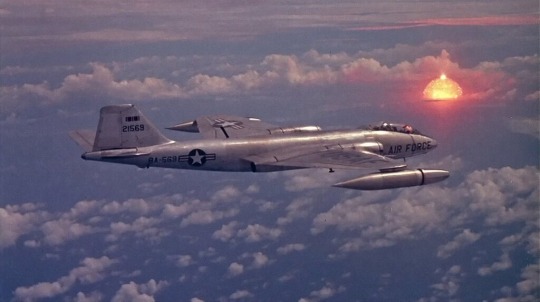
Operation Hardtack Poplar, July 1958 / Photograph via Wikimedia Commons
#cold war#arms race#operation hardtack oak#nuclear test#nuclear explosion#us nuclear test#July#1958#1950s
4 notes
·
View notes
Audio
William T. Stromberg | Operation Hardtack/Teak and Orange
Trinity and Beyond: The Atomic Bomb Movie (1995)
#William Stromberg#william t stromberg#Operation Hardtack#Teak and Orange#Trinity and Beyond#The Atomic Bomb Movie#films#music#soundtrack
2 notes
·
View notes
Video
youtube
Operation Hardtack/Teak and Orange
Trinity and Beyond: The Atomic Bomb Movie
Composer: William T. Stromberg
Performed by the Moscow Symphony Orchestra with William Stromberg conducting
#Operation Hardtack#Teak and Orange#William Stromberg#Trinity and Beyond: the Atomic Bomb Movie#soundtrack#music#documentaries#Trinity and Beyond
1 note
·
View note
Photo

Pics of Exoatmospheric High Altitude Nuclear Weapons Tests - Operation Hardtack/Teak and Orange & Starfish Prime via /r/space http://ift.tt/2ie2DNK
#reddit#Pics of Exoatmospheric High Altitude Nuclear Weapons Tests - Operation Hardtack/Teak and Ora
2 notes
·
View notes
Photo
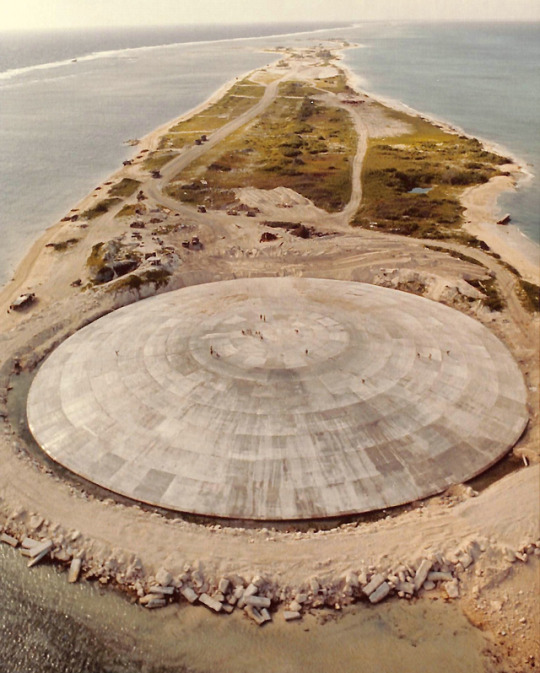
Aerial view of Cactus Dome built to cover 84,000 cubic meters of interred radioactive soil scraped from the various contaminated Enewetak Atoll islands. In 1977-1980 the crater created by the Cactus shot of Operation Hardtack
855 notes
·
View notes
Photo

Operation Hardtack I - Thermonuclear detonation during the Pacific tests in 1958. https://wrhstol.com/2WMCs6r
30 notes
·
View notes